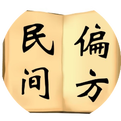————————————————————————————————————————————————————————————————–
This category of Chinese herbs functions to clear internal heat, relieve heat toxins, and cool the blood, primarily used for heat-type constitution and internal heat syndromes. 1. Xuan Shen (Scrophularia Root) Xuan Shen is the root of the Scrophulariaceae plant, containing xuan shen glycosides and iridoid glycosides; it also contains volatile oils and alkaloids. Pharmacological tests have shown that Xuan Shen decoction, alcohol extract, and infusion have blood pressure-lowering effects; it also has vasodilatory and cardiotonic effects. Various preparations of Xuan Shen have antipyretic and anticonvulsant effects. Traditional Chinese Medicine (TCM) considers it cold in nature, sweet and bitter in taste, and functions to nourish yin and reduce fire, cool the blood, and detoxify, suitable for symptoms such as heat disease with thirst, rashes, bone steaming fever, insomnia, spontaneous sweating, night sweats, injury to fluids with constipation, and sore throat. Dosage: 6-12 grams; avoid use in cases of loose stools and excessive phlegm-dampness. 2. Jue Ming Zi (Cassia Seed) Jue Ming Zi is the seed of the leguminous plant Jue Ming, containing anthraquinones and anthrones, as well as vitamin A. Pharmacological tests have shown that Jue Ming Zi lowers blood pressure and serum cholesterol; it has antibacterial effects and promotes bowel movements. TCM considers it slightly cold, sweet and bitter in taste, and functions to clear the liver and brighten the eyes, promote urination and relieve constipation, suitable for symptoms such as liver heat or wind-heat in the liver causing red, painful eyes, photophobia, and excessive tearing; it is also effective for treating hypertension, hepatitis, cirrhosis with ascites, and habitual constipation. Dosage: 3-9 grams, crushed and decocted. 3. Di Gu Pi (Lycium Bark) Di Gu Pi is the root bark of the Solanaceae plant Lycium, containing cinnamic acid, various phenolic compounds, betaine, and linoleic acid. Di Gu Pi has significant antipyretic effects, and its decoction can lower blood sugar, reduce serum cholesterol, and combat fatty liver. The infusion of Di Gu Pi has shown significant blood pressure-lowering effects in animals. TCM considers it cold in nature, sweet and bland in taste, and functions to cool the blood, reduce steaming, and clear lung heat, suitable for symptoms such as deficiency heat with night sweats, lung heat cough and wheezing, blood heat causing hemoptysis, epistaxis, carbuncles, and tuberculosis, as well as hypertension. Dosage: Generally 3-9 grams. 4. Lu Gen (Reed Rhizome) Lu Gen is the underground stem of the grass plant Reed, containing coixol and asparagine. TCM considers it cold in nature, sweet in taste, and functions to clear heat and generate fluids, relieve irritability, stop vomiting, and promote urination, suitable for heat diseases injuring fluids, irritability and thirst, gastric heat vomiting, choking sensation, and treating lung heat cough and lung abscess. Dosage: Generally 9-30 grams when dried; 15-40 grams when fresh. 5. Lian Qiao (Forsythia Fruit) Lian Qiao is the fruit of the Oleaceae plant Forsythia, containing volatile oils, forsythoside, flavonoids, and alkaloids. Pharmacological tests indicate that Lian Qiao has broad-spectrum antibacterial effects, with forsythoside being a major antibacterial component; it also has anti-inflammatory, antiemetic, diuretic, and cardiotonic effects; the flavonoids can enhance capillary density, thus having hemostatic effects on bleeding caused by capillary rupture and subcutaneous hemorrhage. TCM considers it slightly cold, bitter in taste, and functions to clear heat and detoxify, disperse lumps and reduce swelling, suitable for warm heat, erysipelas, rashes, carbuncles, and allergic purpura. Dosage: Generally 6-9 grams. 6. Mu Dan Pi (Peony Root) Mu Dan Pi is the root bark of the Ranunculaceae plant Peony, containing paeonol, paeonol glycosides, volatile oils, and phytosterols. Pharmacological tests have shown that Mu Dan Pi lowers blood pressure; it has analgesic, sedative, anti-inflammatory, and antipyretic effects; it also has strong inhibitory effects on various pathogenic bacteria. TCM considers it cool in nature, bitter and pungent in taste, and functions to clear heat, cool the blood, harmonize the blood, and clear stasis, suitable for symptoms such as heat entering the blood level, rashes, severe pain, hemoptysis, carbuncles, and traumatic injuries. Dosage: 5-9 grams, but avoid use in cases of spleen and stomach deficiency with cold diarrhea. 7. Zhi Mu (Anemarrhena Rhizome) Zhi Mu is the rhizome of the Liliaceae plant Anemarrhena, containing various saponins and flavonoids. Tests have shown that Zhi Mu has significant antipyretic effects, with notable efficacy against epidemic hemorrhagic fever, epidemic type B encephalitis, and tidal fever in tuberculosis. TCM considers it cold in nature, sweet and bitter in taste, and functions to clear heat and drain fire, nourish yin and moisten dryness, suitable for symptoms such as lung heat cough and wheezing or yin deficiency cough, irritability and thirst, bone steaming fever, difficulty urinating, and constipation. Dosage: Generally 6-9 grams, but avoid use in cases of kidney yang deficiency, weak pulse, and loose stools. 8. Ban Lan Gen (Isatis Root) Ban Lan Gen is the root of the Brassicaceae plant Isatis, containing indigo and various alkaloids. Ban Lan Gen has significant antiviral effects. It inhibits various pathogenic bacteria and has effects against leptospirosis. Clinically, Ban Lan Gen decoction taken orally or injected intramuscularly has shown significant efficacy in treating epidemic type B encephalitis; it is also effective for acute and chronic hepatitis, alleviating or resolving symptoms and improving liver function; Ban Lan Gen is effective in treating viral skin diseases such as herpes simplex, shingles, pityriasis rosea, and flat warts. TCM considers it cold in nature, bitter in taste, and functions to clear heat and detoxify, cool the blood, and benefit the throat, suitable for symptoms such as influenza encephalitis, type B encephalitis, pneumonia, erysipelas, heat toxin rashes, and herpes. Dosage: Generally 5-9 grams; avoid use in cases of spleen and stomach deficiency with cold. 9. Jin Yin Hua (Honeysuckle Flower) Jin Yin Hua is the flower bud of the Caprifoliaceae plant Honeysuckle, containing chlorogenic acid, inositol, and flavonoids. Pharmacological tests have shown that Jin Yin Hua has anti-inflammatory and antipyretic effects, inhibiting influenza viruses and various pathogenic bacteria and skin pathogens, reflecting its heat-clearing and detoxifying properties. TCM considers it cold in nature, sweet in taste, and functions to clear heat and detoxify, suitable for warm disease fever, heat toxin dysentery, sores, carbuncles, and boils. Dosage: Generally 6-12 grams; avoid use in cases of deficiency cold diarrhea and sores with clear pus without heat toxin. 10. Xia Ku Cao (Selfheal Spike) Xia Ku Cao is the flower or whole herb of the Lamiaceae plant Selfheal, containing triterpenoid saponins and their aglycones, volatile oils, and vitamins. Pharmacological studies have shown that the whole herb of Xia Ku Cao has blood pressure-lowering effects; its decoction has varying degrees of inhibitory effects on common skin fungi and various pathogenic bacteria. TCM considers it cold in nature, bitter and pungent in taste, and functions to clear liver fire, disperse stagnation, and lower blood pressure, suitable for symptoms such as liver fire causing red, swollen, painful eyes, pain in the eyeball, photophobia, headache, and dizziness; it is also used for scrofula and goiter caused by phlegm-heat stagnation. Dosage: Generally around 9 grams. 11. Zhi Zi (Gardenia Fruit) Zhi Zi is the fruit of the Rubiaceae plant Gardenia, containing various bitter glycosides, as well as mannitol and ursolic acid. Zhi Zi has a choleretic effect, increasing bile secretion; it also has cooling, sedative, analgesic, and anticonvulsant effects; it has antimicrobial effects, inhibiting various pathogenic bacteria and skin pathogens. TCM considers it cold in nature, bitter in taste, and functions to drain fire and relieve irritability, clear heat and promote dampness, cool the blood and detoxify, suitable for symptoms such as heat disease with irritability and insomnia, jaundice, red eyes, epistaxis, and heat toxin sores. Dosage: 3-9 grams. 12. Pu Gong Ying (Dandelion) Pu Gong Ying is the whole herb of the Asteraceae plant Dandelion, containing dandelion sterols, choline, inulin, and fruit acids; its decoction has antimicrobial effects; it also has liver-protective, choleretic, and immune-enhancing effects. TCM considers it cold in nature, sweet and bitter in taste, and functions to clear heat and detoxify, reduce swelling and disperse lumps, suitable for acute mastitis, lymphadenitis, shoulder gland inflammation, gastritis, hepatitis, cholecystitis, and urinary tract infections. Dosage: 9-15 grams, crushed and applied externally, can be used for breast abscesses, rashes, and carbuncles.
Recommendation: For more folk TCM health information, long press your finger to scan the QR code below to learn more↓↓↓↓↓


If you think you might find this useful, save it and share it with your friends; I believe it can truly help everyone!
Disclaimer: This article is reproduced from the internet and published materials. If there is any infringement, please contact us for removal. The various prescriptions and remedies mentioned are for informational sharing only and do not constitute medical advice, recommendations, or guidance. Please use them under the guidance of a physician.

